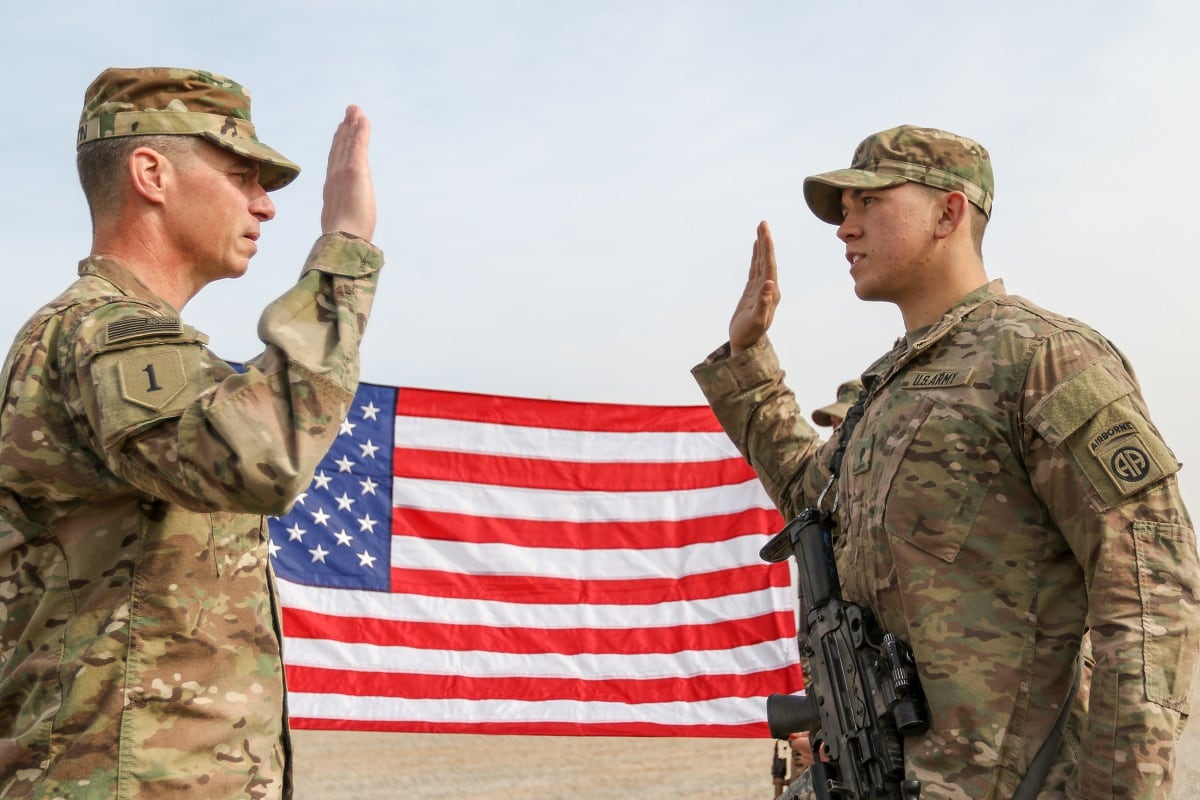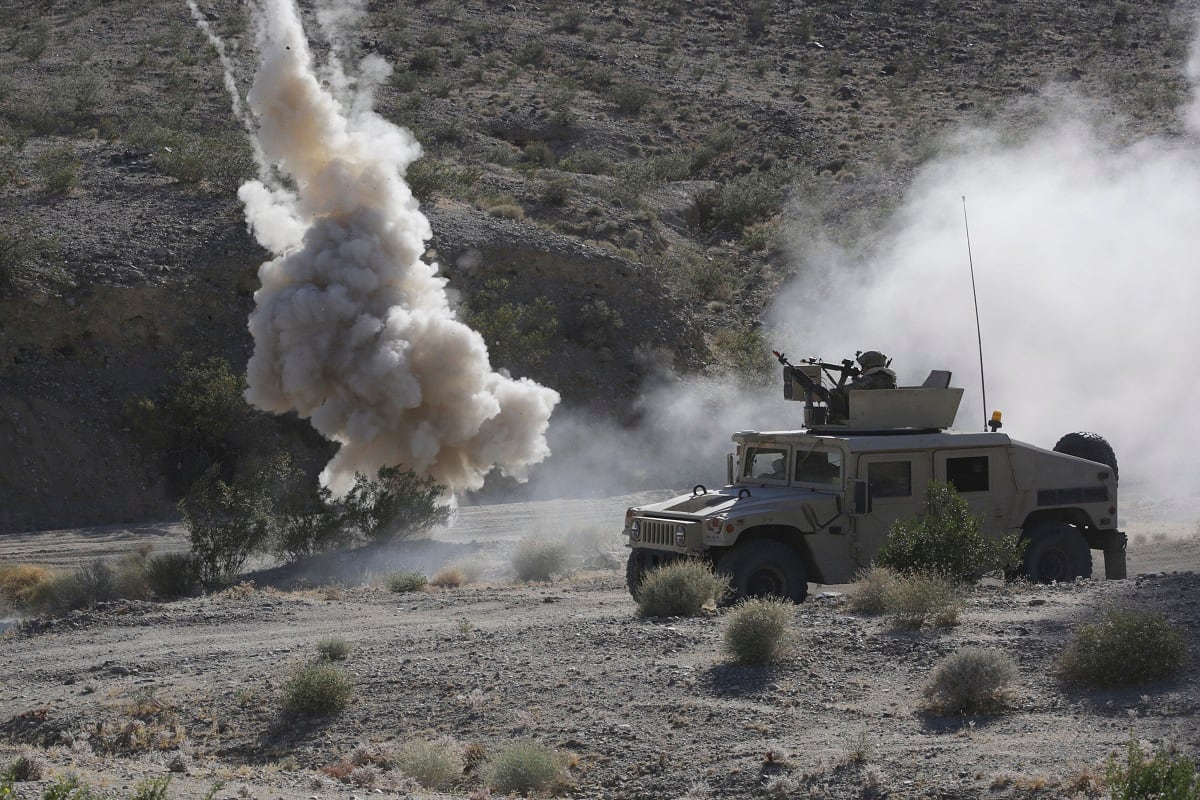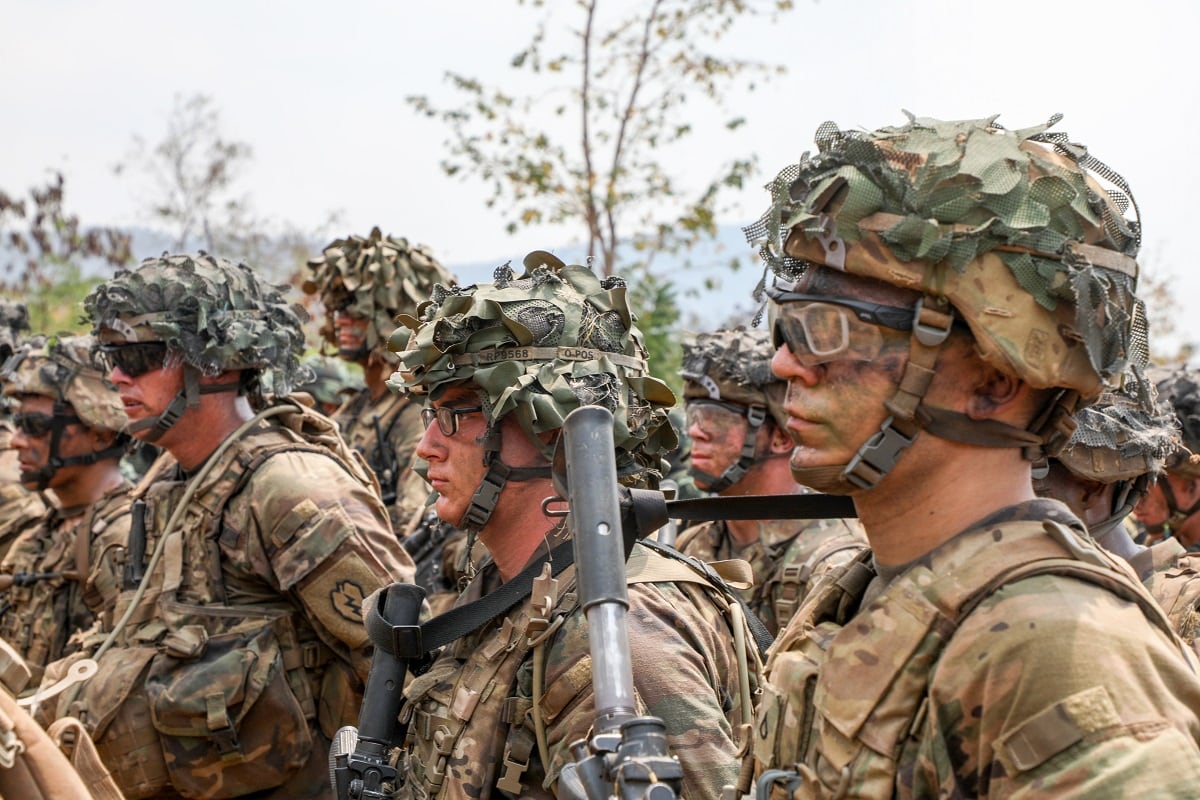The Army is on track to grow by 2,000 soldiers this year, according to senior leadership, a big drop from the 11,500-troop goal they were facing last fall. To get there, Army Recruiting Command is pulling out all the stops to shore up new accessions, and on the back end, Human Resources Command is offering hundreds of bonuses to keep soldiers on active duty.
Retention is in the historically high mid-80 percent rage for the second year in a row, Army Secretary Mark Esper told reporters in January. But the Army still needs soldiers to fill certain jobs, with a goal of retaining about 50,000 active-duty soldiers this year.
To encourage reenlistment into critical military occupation specialties, a new set of selective retention bonuses went live on March 18, about half-way through the fiscal year.
In a tough recruiting environment, the service is also leaning on enlistment bonuses to attract and keep soldiers for high-demand jobs.
“The Army continues to review the enlistment bonus program monthly and adjust when needed to enlist quality recruits for critical skill military occupational specialties,” Lt. Col. Emanuel Ortiz-Cruz, an Army spokesman, told Army Times on March 20.
Top-dollar jobs include intelligence, artillery and logistics, with $15,000 to sweeten the deal. Staying in the Army can also pay tens of thousands of dollars.
“Reenlistment bonuses are reviewed quarterly to support projected critical MOS and skill gaps and shortfalls,” he added. “Both of these bonus programs are crucial to ensuring we can man Army units.”

And now, rather than shooting for 487,500 this year, the service’s end strength goal is much more manageable. At this time last year, leaders have said, they knew they wouldn’t make their goals. But this year, according to McCarthy, things are under control.
“So for us to be at 478 by the end of this fiscal year, I’m confident at this juncture that we’ll get there,” Army Undersecretary Ryan McCarthy told Army Times on March 14.
For the National Guard, the goal is now 335,500, with 189,250 for the Army Reserve, according to Army statistics.
Though the number is part of the budget request for next year, McCarthy clarified that the new goal started in March.
Hundreds of bonus changes
On March 1, Human Resources Command dropped the latest Selective Retention Bonus message, updating the most recent offerings from October.
The overwhelming majority of the hundreds of bonuses saw an update, whether it was a change in eligible ranks or a move up or down on the pay tiers.
Sergeant Major of the Army Dan Dailey told members of Congress in February that the Army has made about 90 percent of its FY19 retention mission already, which is the major driver for SRB changes.
“So that one’s almost done, but the bulk of our work is the out-year mission," Sgt. Maj. Mark Thompson, a senior career counselor, told Army Times.
As of the end of February, the active component was sitting at more than 98 percent of its reenlistment goals. The Reserve is also in the home stretch, at 94 percent, while the Guard is at 62 percent.
While soldiers who are eligible to reenlist this year will still be getting calls from career counselors, the current bonuses are mostly targeting fiscal year 2020 reenlistments.
So far, HRC is at more than 51 percent of its 40,500 mission for fiscal 2020, according to Army statistics.
For 11B infantrymen, the Army’s largest MOS, a few things have changed. The Fort Bliss option, designed to entice soldiers to the 1st Armored Division, has gone away ― and so has the security force assistance brigade option, which popped up as the Army worked to recruit noncommissioned officers to the 3rd, 4th and 5th SFABs over the last year.
Currently, there are still bonuses for all infantrymen, including 11C mortarmen, from $1,000 for a private first class to sign a one-year contract to $46,000 for a sergeant first class to spend five or more years in the 75th Ranger Regiment.
Airborne or special operations billets continue to have some of the highest payouts. The bonus offered to junior enlisted culinary specialists assigned to Army Special Operations Command jumped a tier with the latest message, as did the offering for junior enlisted motor transport operators in the Ranger Regiment.
And the very highest bonuses ― between $17,600 for a one-year contract as a private first class and $72,000 for at least five years as a staff sergeant or sergeant first class ― go to soldiers who are assigned to or are taking steps to transfer into the 780th Military Intelligence Brigade.
Elsewhere in the military intelligence area, for example, the SFABs are still looking for intelligence analysts, but only E-5s are eligible for a bonus ― between $13,500 and $41,100, depending on contract length.
Soldiers who have scheduled training to move into one of these jobs can take advantage of the bonuses, too, according to the message, but they can’t take an SRB for both their current MOS and the one they plan to switch into.
A new bonus message could come out as early as April 18, per the message, but Thompson said there are no current plans to make more changes this spring. However, as the retention picture evolves, bonus offerings will, too.
Slowed growth
In 2017, the Army set itself an ambitious goal: Grow the active-duty force 500,000 soldiers by 2028. They hit their first wicket by a hair in 2017, bringing the active component up to 476,000 while also adding to the Army National Guard and Army Reserve.
But they tried to keep that unprecedented momentum going in 2018, and fell short ― by about 6,500 new accessions, with a net gain of zero over the previous year’s end strength.
Last fall, Army G-1 Lt. Gen. Thomas Seamands told Army Times that the service intended to make up for that shortfall while also shooting for 2019′s 4,000-troop plus-up, but leadership decided to walk that back ahead of the release of the 2020 budget.
Rather than grow by 4,000 a year through 2024, the Army now plans to add 2,000 yearly, bringing the total to 488,000 active soldiers by 2024 and leaving options open for the final push to 500,000.
“500K is the objective,” McCarthy said. “It’s just the pace to get there has slowed.”
Considering that the service was planning to use those greater numbers to fill holes in existing formations, it could be even longer until every operational unit is manned.
“Optimal strength, I would define as in excess of 90 percent. So if you are going to a major training event, a collective training event, ideally you want at least 90 percent of your assigned strength to go to that event,” Army Chief of Staff Mark Milley told Army Times in September. “So we are not there yet, because we still have gaps and holes in many of our operations units, but there are fewer gaps and holes than there were 36 months ago.”to
Once those formations are solid, Milley added, there may be some discussions about adding, for example, a new brigade combat team. In the meantime, McCarthy said, some existing spots have been shuffled around in anticipation of that slower growth.
“We slimmed headquarters and administration functions while adding personnel to areas where they were needed — such as recruiting and military specialties that will be in high demand for the multi-domain fight,” McCarthy said March 14 in a speech at the Brookings Institution.
RELATED

Bonus for recruiters
With a full house of temporary recruiters as of January, the Army is offering a $4,000 bonus to soldiers who convert their MOS to full-time recruiting duty.
“As such, the goal of the 79R bonus is to convert a select number of the detailed recruiters, who would otherwise return to the force, into long-term professional 79R recruiters,” USAREC spokeswoman Kelli Bland told Army Times.
Following the September 2018 announcement that Army Recruiting Command had fallen short of its goal, leadership went full speed ahead on new initiatives to bring the recruiting enterprise out of the “industrial age.”
Six months into the fiscal year, McCarthy said, the major cities they’ve targeted ― like Los Angeles, Portland, Chicago and New York ― are ahead of where they were this time last year.
“We know that these are attainable,” McCarthy said of the new benchmarks.
As of the end of February, the active-duty component is sitting at 471,000 soldiers, with 331,000 in the Guard and 190,000 in the Reserve, according to Army statistics.
Despite the proposed reduction in end strength growth, recruiting missions have stayed the same: 68,000 in the active, 39,000 in the Guard and 15,600 in the Reserve.
Between October and the end of February, the Army added 43,000 soldiers, 35 percent of its total force goal: About 20,000 in the active component and about 23,000 in the reserve.
In short, the service has about six months to add 7,000 soldiers to the active force.

Easing into the end strength increase will also give the Army time to assess whether its new recruiting strategies are working. A market research pilot in Chicago aims to analyze neighborhoods down to blocks, with data about what motivates and matters to the young people and their families there.
There’s also the new Warriors Wanted recruiting slogan and its accompanying commercials, which have been rolling out since October.
“We’ve brought a lot of this online within the last six to seven months ... And then we looked at it and we said, if we had a slower growth rate, we could focus in on the quality, we could get our new operating concept solid and start really firing on all cylinders," McCarthy said.
Meghann Myers is the Pentagon bureau chief at Military Times. She covers operations, policy, personnel, leadership and other issues affecting service members.




